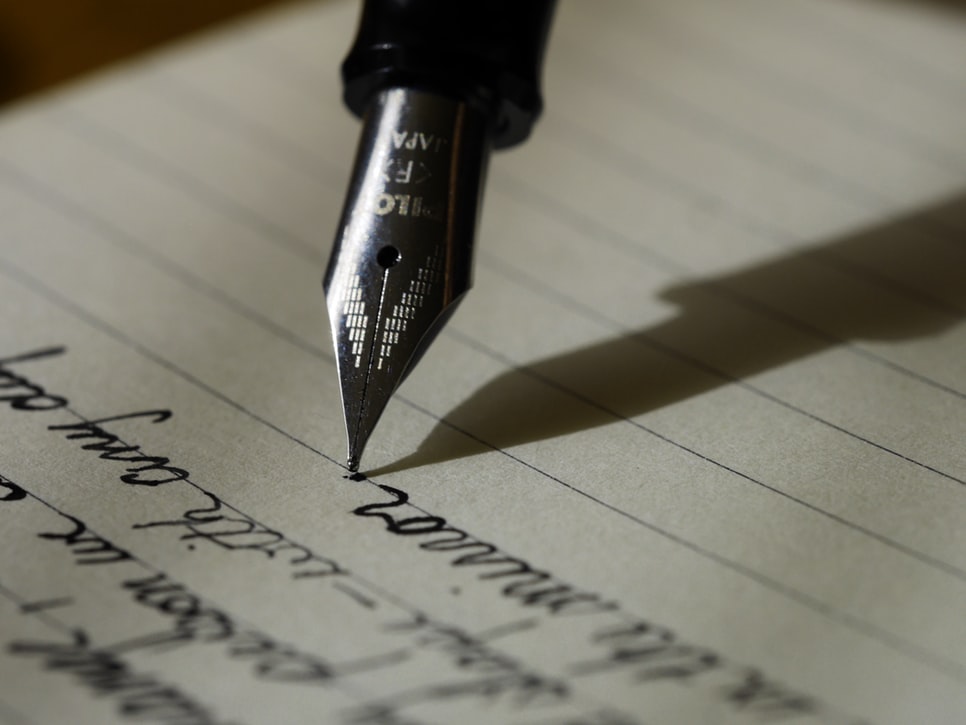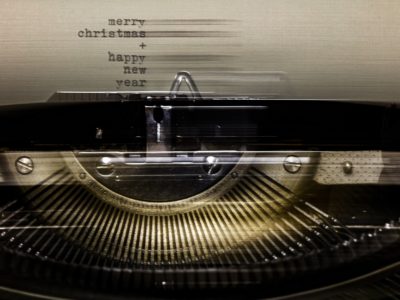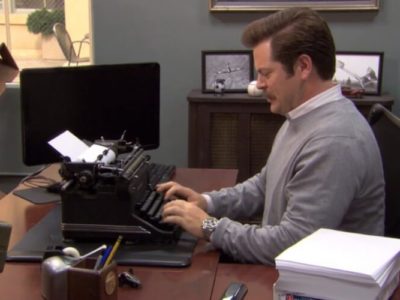Punctuation can get confusing, especially in a language that isn’t totally intuitive in its structure. I’ve compiled for you a list of forgotten comma placements, overused commas, optional commas and other fun punctuation marks. Check them out below.
Missing Commas

1. City-state or city-country combinations
When writing about with city-state or a city-country pairing, a comma must come before and after the state or country.
- Incorrect: Berlin, Germany is a vibrant city.
- Correct: Berlin, Germany, is a vibrant city.
This may seem like the commas are crowding the text, but this is how it’s done. I don’t make the rules; I just write about them.
2. Dates
I don’t know how often you employ dates in your writing, but if you write about history, letters or journal entries, this will come in handy for you. With dates, the rules get a little complicated.
With a month-day-year setup, you separate the year with commas.
- I moved into my dorm on August 24, 2019.
With day-month-year, you don’t need any commas at all.
- I moved into my dorm on 24 August 2019.
With a day of the week and a date, you need a comma.
- On Friday, August 24, I moved into my dorm.
With just a month and a year, you don’t need a comma.
- I moved into my dorm in August 2019.
3. Yes/no
When beginning a sentence with “yes,” “no” and other variations, you need a comma between that word and the rest of the complete sentence that follows.
- Incorrect: Of course I cleaned my room.
- Correct: Of course, I cleaned my room.
4. Question tags
Question tags are words or phrases tacked onto the end of a sentence to make it into a question. Writers can employ this as a rhetorical device, or writers can place question tags into dialogue pretty easily. Here’s a saying that we use pretty often:
- Incorrect: I know right?
- Correct: I know, right?
In this case, “right” is the question tag, and a comma needs to come before it appears in the sentence.
Too Many Commas

1. Subjects and verbs
With extended subjects, there doesn’t need to be a comma before the verb. While your vocal inflection may imply a comma simply because of a lift in your voice, when written it’s actually incorrect to use a comma.
- Incorrect: The things I want to do with my life, do not come easy to me.
- Correct: The things I want to do with my life do not come easy to me.
In this sentence, “the things I want to do with my life” is in itself the subject. An easier way of thinking about this is to take out the extra information, in this case “I want to with my life”:
- The things… do not come easy to me.
You wouldn’t write “the things, do not come easy to me” because there’s no reason to separate the subject and the verb with a comma. It just doesn’t make sense, even if the vocal inflection suggests a comma.
2. Between two nouns in a compound subject or object
There is no need to separate two nouns in a compound subject or in a compound object with a comma.
- Incorrect: Sally, and her family went to the Fourth of July picnic.
- Correct: Sally and her family went to the Fourth of July picnic.
- Incorrect: Sally wore a striped shirt, and red shorts.
- Correct: Sally wore a striped shirt and red shorts.
3. Between two verbs in a compound predicate
A compound predicate is when the subject is doing more than one thing. If there are only two verbs in the compound predicate, do not use a comma to separate them.
- Incorrect: Sally ate barbecue, and brought coleslaw.
- Correct: Sally ate barbecue and brought coleslaw.
This comma rule still applies even when the verb phrase is particularly long.
- Incorrect: Lucy wanted to come to the picnic, but had other obligations.
- Correct: Lucy wanted to come to the picnic but had other obligations.
4. Before “but”
If the word “but” is not joining two independent clauses (clauses that can function on their own as sentences), then you don’t use a comma there.
- Incorrect: The book is riveting, but long.
- Correct: The book is riveting but long.
However, if “but” joins two independent clauses, you can use a comma, no problem.
Optional Commas

1. Comma splice
Comma splices are a jazzy way of splitting up two independent clauses within a sentence. With a comma splice, you essentially split the independent clauses apart and connect them either with a semicolon or a comma and a conjunction (connecting word).
- Original sentence (incorrect): I went into the store, I bought a shirt.
- With semicolon: I went into the store; I bought a shirt.
- With comma and conjunction: I went into the store, and I bought a shirt.
If you don’t want to be super wordy and the subjects of your two independent clauses are the same, you can totally eliminate any unnecessary words by taking out the subject of the second clause and add in a conjunction:
- Conjunction and no second subject: I went into the store and bought a shirt.
This is less wordy and still grammatically correct.
2. “Too”
I can’t tell you how many times I’ve had my parents correct my writing when I use the word “too” in a sentence. Fun fact: the comma before (or after) “too” or equivalent words is totally optional. If you don’t quite know what I mean, fret not. Here are some examples:
- With comma: I went to the mall and the grocery store, too.
- Without comma: I went to the mall and the grocery store too.
You don’t need the comma before the “too” to make the sentence grammatically correct. So, do what you want with the commas and “too.”
3. Appositives
Appositives are nouns that rename another noun right next to it. For example,
- My dog, Max, likes to go on walks.
In this case, “Max” would be an appositive because it is renaming “my dog”. The commas here aren’t absolutely necessary. If you prefer a clean appearance within your text, you can go ahead and take them out:
- My dog Max likes to go on walks.
And the sentence is still completely correct grammatically.
4. Oxford Comma
The Oxford comma is a way of differentiating items in a list. Before the conjunction that comes prior to the last term in the list, you can throw a comma in.
- Without the Oxford Comma: Annie drinks coffee, tea and smoothies.
- With the Oxford Comma: Annie drinks, coffee, tea, and smoothies.
Both are correct!
In some cases, it can come in handy if there’s a risk of confusing the list for an appositive phrase.
- At the coffee shop, I met my parents, Jennifer Lopez, and Chris Pratt.
Here, the Oxford comma helps to make clear that “my parents” are not, in fact, Jennifer Lopez and Chris Pratt. Without the Oxford comma:
- At the coffee shop, I met my parents, Jennifer Lopez and Chris Pratt.
Jennifer Lopez and Chris Pratt could very well be my parents with that wording and punctuation.
The Oxford comma is controversial and frankly just a stylistic choice. I don’t use the Oxford comma because I think it crowds the text, but I know plenty of people who use it for its way of distinguishing items in a series (we may get into heated arguments, but we still love each other. Deep, deep down).
Bonus: Other Punctuation

1. Colon
Personally, I like colons. I’ll let you make up your own opinion about them, though. Colons are a neat way to introduce a list or additional information. Depending on how you use them, they can take the place of commas.
- With a comma: She placed her order, one medium cappuccino.
- With a colon: She placed her order: one medium cappuccino.
- To introduce a list: She placed her order: one medium cappuccino, a bagel with plain cream cheese and two biscotti.
2. Parentheses
You can use parentheses in place of commas to add any extra information, like appositives or asides. Often in academic writing, you use them in an in-text citation.
- Using commas: Judy, Sally’s mom, didn’t want Lucy to come to the picnic.
- Using parentheses: Judy (Sally’s mom) didn’t want Lucy to come to the picnic.
All you have to remember with parentheses is that it has to make sense where they are, and you have to close the pair of parentheses. Or else, it’s just a parenthesis.
3. Dashes
Dashes are a handy way to format appositives and fun, additional information. There are a few kinds of dashes, so it can get a little complicated. An em dash is technically three hyphens (-) and looks like this: —. An en dash is two hyphens and looks like this: –. For relevance’s sake, we’re only going to talk about em dashes.
Em dashes can easily replace parenthetical phrases without the text appearing jumbled or hard to read.
- With parentheses: Soon after arriving at the party, the girl tripped onto the floor (or rather, face-planted onto it.
- With the em dash: Soon after arriving at the party, the girl tripped onto the floor — or rather, face-planted onto it.
Em dashes can also replace colons if the colons are used in an appositive phrase.
- With the colon: There were two options to drink: Sprite and Diet Coke.
- With the em dash: There were two options to drink — Sprite and Diet Coke.
So, if you want to mix up your punctuation because you’re tired of commas, colons and parentheses, experiment with em dashes.
4. Semicolon
This particular use of the semicolon is what my eighth grade English teacher referred to as The Super Comma. She would flex her muscles like a bodybuilder and deepen her voice in a frightening way when she did this. The Super Comma is a way we can separate terms in a list without it getting confusing, especially if the terms are particularly long individually or have commas in them.
- I’ve been to Reykjavík, Iceland; Sao Paolo, Brazil; London, England, and Copenhagen, Denmark.
Since the city-country combinations have commas in them, seeing these terms in a list can get complicated if the list is laid out like this:
- I’ve been to Reykjavík, Iceland, Sao Paolo, Brazil, London, England, and Copenhagen, Denmark.
With the Super Comma (aka a semicolon), we can avoid any confusion caused by lengthy terms or comma’d items in a series.
So, now that you’re well-seasoned in comma usage, you’re ready to write. Whether you’re a blogger, a writer in another capacity or a student, these comma rules and tips are universal. Go forth and punctuate!



















